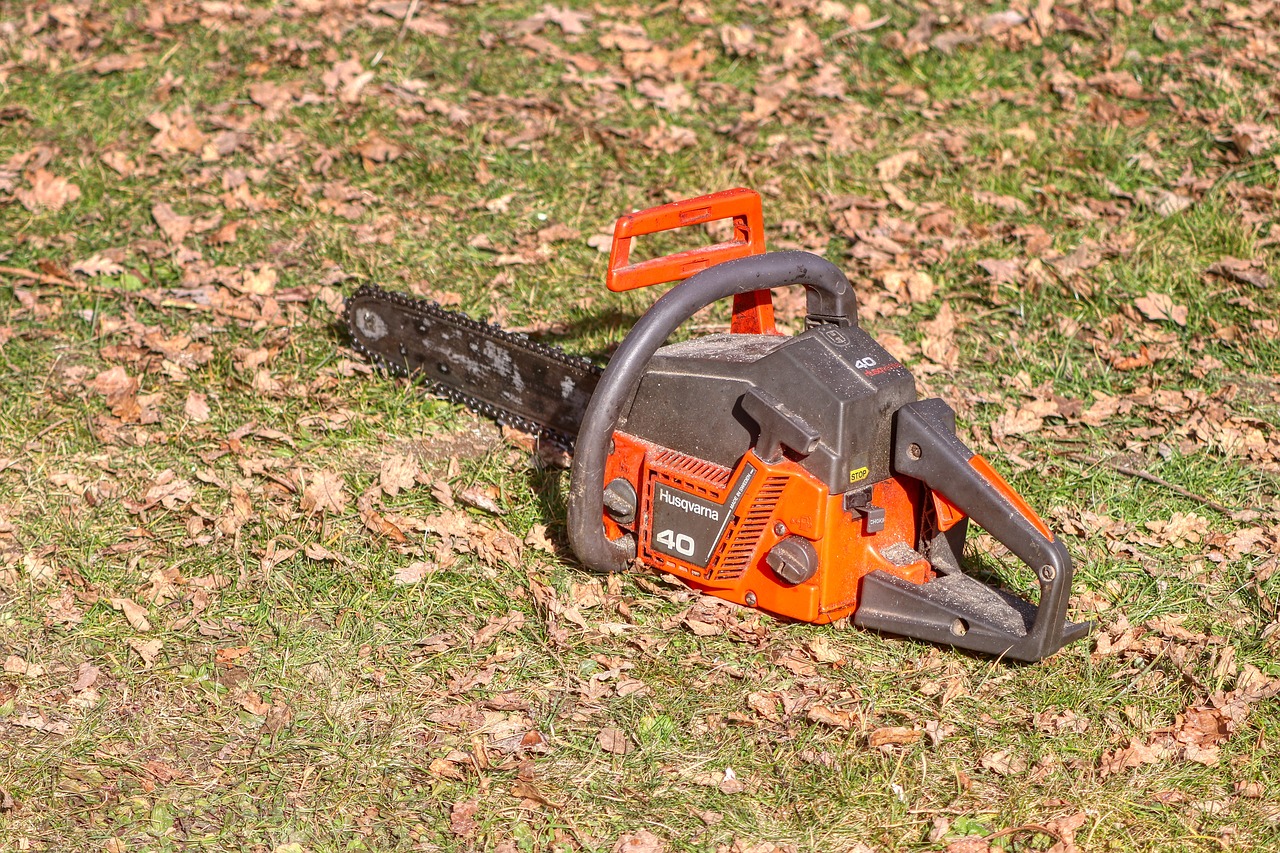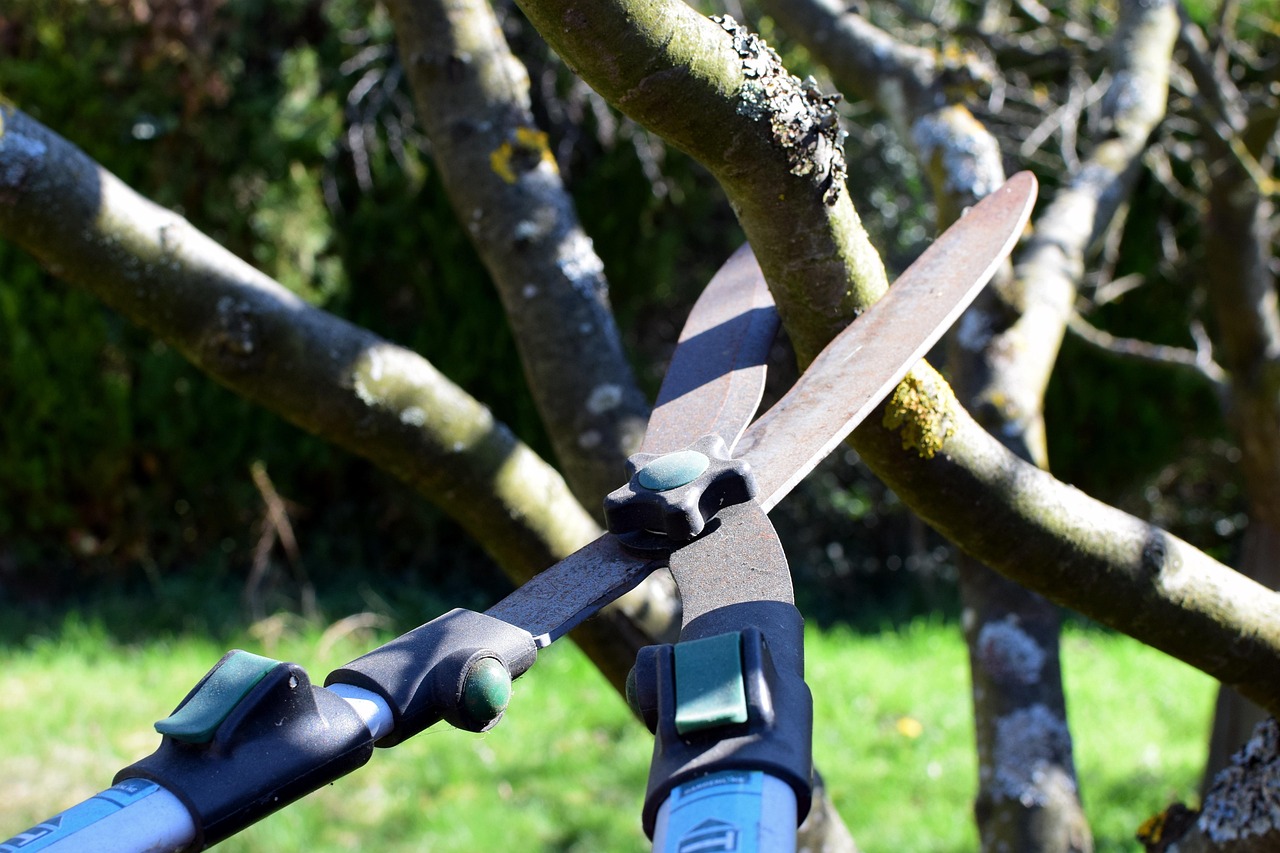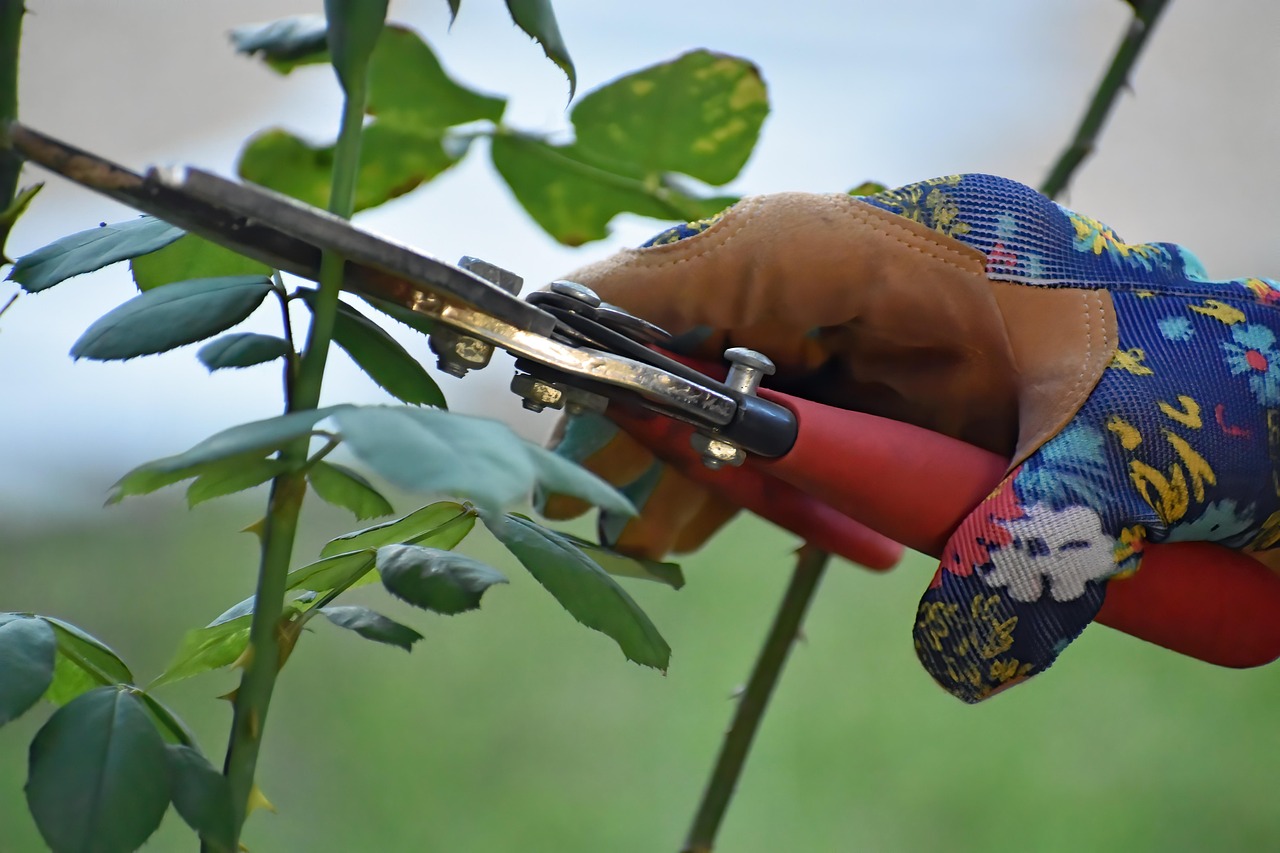Tree pruning blades come in various types designed for specific cutting needs. The right blade ensures efficient cutting, reduces strain, and promotes healthy tree growth. Common types include straight blades, curved blades, and serrated blades, each suited for different pruning tasks.
Understanding Tree Pruning Blades
Pruning is an essential practice for maintaining the health and appearance of trees. It involves removing dead or overgrown branches to encourage new growth and improve air circulation. Choosing the right tools for pruning is just as crucial as understanding the methods of pruning itself. The type of blade used can significantly affect the quality of the cut and the overall health of the tree.

Tree pruning blades are specifically designed to handle various tasks, from trimming small branches to cutting larger limbs. Selecting the correct blade type depends on factors such as the thickness of the branches, the type of tree, and the desired outcome of the pruning. Below are some common types of tree pruning blades and their applications.
Types of Tree Pruning Blades
The following table outlines different types of tree pruning blades along with their specific uses:
| Blade Type | Description | Best For |
|---|---|---|
| Straight Blade | A flat blade that cuts through wood with a straight motion. | Thin branches and young trees. |
| Curved Blade | Features a curved edge that provides a slicing action. | Thicker branches and more precise cuts. |
| Serrated Blade | Has a jagged edge for tearing through tough materials. | Dead wood and woody stems. |
| Bypass Blade | Two blades that slide past each other, similar to scissors. | Live branches for a clean cut. |
| Anvil Blade | A single blade that cuts against a flat surface. | Dry or dead branches. |
Straight Blades
Straight blades are designed for simple cuts. They work well on young trees and thin branches. The flat edge allows for clean cuts, which is beneficial for promoting healing in live wood. However, they may not be as effective for thicker branches or more intricate pruning tasks.

Curved Blades
The curved blade is ideal for making precise cuts on thicker branches. The curvature allows for a slicing motion, which can be more efficient for cutting through tougher materials. This type of blade helps reduce the effort needed while pruning and minimizes damage to the tree.
Serrated Blades
Serrated blades excel in cutting through tough materials. Their jagged edges can tear through dead wood and woody stems effectively. These blades are particularly useful when dealing with overgrown areas where tougher branches may be present. However, they may leave rougher cuts on live wood, so care should be taken when using them on healthy trees.
Bypass Blades
Bypass blades are favored by professional arborists and experienced gardeners alike. They feature two blades that slide past each other, allowing for clean cuts on live branches. This mechanism helps prevent crushing the wood tissue, which encourages faster healing. Bypass pruners are an excellent choice for maintaining healthy trees.

Anvil Blades
Anvil blades consist of a single cutting blade that slices against a flat surface. They are best suited for dry or dead branches, as they can crush live wood tissue. While anvil pruners can handle thicker limbs, they are less effective when it comes to making clean cuts on living branches.
Choosing the Right Blade
Selecting the appropriate blade type is crucial for effective tree pruning. Here are some factors to consider:
- Branch Thickness: Assess the thickness of the branches you intend to prune.
- Tree Health: Consider whether you are cutting live or dead wood.
- Type of Tree: Different tree species may require different cutting techniques.
- Your Experience Level: Choose a blade that matches your skill level to ensure safety and efficiency.
Understanding these factors will help you make informed decisions. With the right blade, you can enhance your pruning efforts and support healthy growth in your trees.

In addition to choosing the right blade type, proper maintenance and handling of your pruning tools are essential. Regularly sharpening blades ensures clean cuts, while cleaning them after use prevents disease spread between plants. Investing time in understanding your tools will pay off in healthier trees and more effective pruning sessions.
Pruning Techniques and Their Relation to Blade Types
Understanding different pruning techniques is essential for effective tree care. The technique you choose can influence the type of blade that will work best for the job. Each method has unique characteristics that align with specific blade types, ensuring efficient and healthy cuts.
Common Pruning Techniques
Here are some widely used pruning techniques that every tree care enthusiast should know:
- Thinning: This method involves selectively removing branches to improve light penetration and air circulation within the tree’s canopy. It helps reduce the risk of disease and encourages new growth.
- Heading: Heading cuts involve cutting back branches to a bud or lateral branch. This technique encourages bushier growth and is often used on young trees to shape their form.
- Reduction: This technique reduces the size of a tree by cutting back its branches. It helps maintain the tree’s shape and size while minimizing stress on the tree.
- Deadwooding: Removing dead, dying, or diseased branches is crucial for maintaining tree health. This technique prevents the spread of disease and enhances the tree’s aesthetic appeal.
Matching Blade Types to Pruning Techniques
Matching the appropriate blade type with your chosen pruning technique can significantly enhance your efficiency. Below is a summary of which blade types pair well with each technique:
| Pruning Technique | Recommended Blade Type | Reason |
|---|---|---|
| Thinning | Bypass Blade | Provides clean cuts, minimizing damage to live tissue. |
| Heading | Straight Blade | Ideal for making precise cuts at an angle. |
| Reduction | Curved Blade | Slices through thicker branches effectively. |
| Deadwooding | Serrated Blade | Tears through tough, dead wood with minimal effort. |
Safety Considerations When Pruning
Safety should always be a priority when pruning trees. Using the correct tools and techniques can prevent accidents and injuries. Here are several essential safety tips to keep in mind:
- Wear Protective Gear: Always wear gloves, safety glasses, and a hard hat if working near tall trees or hazardous conditions.
- Inspect Tools Before Use: Check your blades for damage or dullness before starting. Sharp blades are safer as they require less force to cut.
- Maintain Balance: When using ladders or climbing trees, ensure you have a stable position to avoid falls.
- Avoid Wet Conditions: Pruning in wet weather can be slippery and dangerous. Choose dry days for your pruning activities.
Proper Handling of Tree Pruning Tools
Proper handling and maintenance of your pruning tools not only ensure your safety but also enhance their longevity and performance. Here are some practices to follow:
- Clean Your Tools: After each use, clean your blades with soap and water to remove sap, dirt, and debris.
- Sharpen Regularly: Keeping blades sharp is vital for clean cuts and reducing strain on your hands and wrists.
- Lubricate Moving Parts: Apply lubricant to any moving parts to keep them operating smoothly.
- Store Properly: Store tools in a dry place, preferably in a protective case or sheath to prevent damage.
The Impact of Tree Species on Pruning Needs
The species of tree plays a significant role in determining the best pruning practices and blade types. Each species has unique growth patterns, wood hardness, and vulnerabilities that must be considered. Below are some examples of popular tree species and their specific pruning needs:
- Fruit Trees: Require careful thinning and heading to promote fruit production. Bypass blades are often recommended for clean cuts that support healthy growth.
- Evergreens: Typically need reduction pruning to maintain their shape. Curved blades work well for thicker branches found in these species.
- Deciduous Trees: Benefit from deadwooding and thinning techniques. Depending on the thickness of branches, either straight or bypass blades may be suitable.
Understanding the specific needs of different tree species allows you to tailor your pruning approach effectively. By combining the right techniques with appropriate tools, you can foster healthier trees that thrive in their environments.
The next section will explore the importance of seasonal timing in tree pruning, including how different times of the year affect tree health and growth, as well as which blade types are best suited for seasonal tasks.
Seasonal Timing and Its Importance in Tree Pruning
The timing of tree pruning is crucial for maintaining tree health and promoting optimal growth. Different seasons bring varying weather conditions and growth patterns, which can significantly affect how and when you should prune. Understanding these seasonal dynamics will help you choose the right time and technique for effective pruning.
Understanding Tree Growth Cycles
Trees undergo distinct growth cycles throughout the year, typically characterized by three main phases: dormancy, active growth, and preparation for dormancy. Each phase has its own implications for pruning practices:
- Dormancy (Late Fall to Early Spring): During this period, trees conserve energy and prepare for the upcoming growing season. Pruning during dormancy can stimulate new growth when the weather warms up.
- Active Growth (Spring to Early Summer): Trees are in full bloom during this time, with new leaves and flowers emerging. Pruning during this phase can be disruptive, potentially harming the tree’s health.
- Preparation for Dormancy (Late Summer to Fall): This phase is a transitional period where trees begin to slow down. Pruning at this time helps prepare trees for winter by removing weak or diseased branches.
Best Times for Pruning
The following table outlines the best times to prune various types of trees based on their growth cycles:
| Tree Type | Best Pruning Time | Recommended Blade Type |
|---|---|---|
| Fruit Trees | Late Winter to Early Spring | Bypass Blade |
| Deciduous Trees | Late Winter or Early Spring | Straight or Bypass Blade |
| Evergreens | Late Spring to Early Summer | Curved Blade |
| Ornamental Trees | After Blooming in Late Spring | Bypass or Serrated Blade |
Pruning in Different Seasons
Winter Pruning
Winter is often considered the best time for pruning many types of trees. During dormancy, trees are less stressed, making it easier to see the structure without leaves. Some benefits of winter pruning include:
- Reduced risk of disease transmission since many pests are inactive.
- Easier visibility of the tree’s structure allows for better decision-making regarding cuts.
- Stimulates growth as trees wake up from dormancy, leading to a healthier spring flush.
Spring Pruning
Spring is a critical time for pruning, particularly for fruit trees. However, caution is advised because:
- This period can disrupt flowering if done too late.
- Pruning during active growth may stress the tree.
- Choosing the right blade, like a bypass blade, helps ensure clean cuts that reduce damage to living tissue.
Summer Pruning
Summer is an excellent time for specific pruning tasks, especially for shaping and controlling growth. Consider these points:
- Summer pruning helps maintain size and shape.
- This method can promote fruit production in some species by limiting excess foliage.
- Curved blades are recommended for thicker branches during this season.
Fall Pruning
Fall pruning is less common but can be practical in certain situations. Key considerations include:
- This time is suitable for removing dead or diseased wood before winter.
- Caution should be taken not to stimulate new growth that may not withstand winter temperatures.
- Serrated blades can be useful for cutting through older, tougher wood found in dead branches.
The Role of Weather Conditions in Pruning
The weather can significantly influence your pruning schedule. Certain conditions can enhance or hinder the effectiveness of your pruning efforts:
- Temperature: Ideal temperatures for pruning are typically between 40°F and 70°F. Extreme cold can freeze cuts, while excessive heat may stress the tree.
- Moisture: Avoid pruning during wet weather as it increases the risk of fungal diseases. Dry conditions are preferable.
- Wind: Strong winds can make it difficult to maintain balance when using ladders or working at height. Choose calm days for safer pruning practices.
Planning your pruning activities according to seasonal timing and weather conditions can lead to healthier trees and more effective results. Understanding these factors ensures that your pruning efforts align with the natural growth cycles of the trees you are caring for. The next section will delve into advanced techniques and considerations for specialized pruning tasks, including tools that enhance precision and efficiency in your work.
Advanced Techniques in Tree Pruning
As you become more experienced in tree pruning, you may want to explore advanced techniques that enhance your efficiency and precision. These techniques often require specialized tools and a deeper understanding of tree biology. Below are several advanced pruning techniques worth considering:
Espalier Pruning
Espalier pruning involves training trees to grow flat against a wall or trellis. This method is particularly popular for fruit trees and ornamental species. Key points to consider include:
- Selection of Species: Choose trees that respond well to espalier techniques, such as apple or pear trees.
- Regular Maintenance: Regular pruning is essential to maintain the desired shape and health of the tree.
- Tool Choice: Bypass blades are recommended for making clean cuts that promote healing.
Crown Reduction
Crown reduction involves selectively shortening branches to reduce the overall height and spread of a tree. This technique can help maintain the tree’s health and aesthetics. Consider the following:
- Identify Branches to Cut: Focus on the outermost branches to maintain the tree’s natural shape.
- Use Proper Techniques: Make cuts just above a bud or lateral branch to encourage growth in the desired direction.
- Recommended Blades: Curved blades or straight blades are best for making precise cuts on thick branches.
Pollarding
Pollarding is a pruning technique that involves cutting back the main branches of a tree to promote bushy growth. This method is often used on willows and certain types of oaks. Important considerations include:
- Timing: This technique is typically performed in late winter or early spring during dormancy.
- Maintenance Cycle: Pollarded trees require annual maintenance to ensure new growth is managed effectively.
- Blade Selection: A serrated blade can be beneficial for cutting through older wood.
Using Specialized Pruning Tools
In addition to standard blades, there are specialized pruning tools that can enhance your capabilities:
- Pole Pruners: Ideal for reaching high branches without a ladder, these tools extend your reach and often feature bypass or serrated blades.
- Loppers: These are heavy-duty pruners designed for thicker branches, often equipped with long handles for increased leverage.
- Pruning Saws: These come in various sizes and tooth configurations, allowing you to tackle larger limbs effectively.
Final Thoughts
Understanding the various types of tree pruning blades and their applications is essential for anyone involved in tree care. Each blade serves a specific purpose, making it vital to select the right tool for the job based on branch thickness, tree species, and the specific pruning technique being employed.
The seasonal timing of pruning also plays a critical role in tree health. By aligning your pruning activities with the natural growth cycles of trees and considering weather conditions, you can foster healthier growth and minimize stress on the trees. Advanced techniques such as espalier, crown reduction, and pollarding offer additional ways to manage trees effectively, allowing for creativity and precision in your pruning efforts.
Ultimately, investing time in learning about tree biology, mastering various pruning methods, and utilizing the right tools will lead to successful outcomes. Whether you’re a novice gardener or an experienced arborist, understanding these elements will enhance your ability to care for your trees and contribute positively to their health and vitality.
Your journey into tree pruning is not just about cutting branches; it is about cultivating an environment where trees can flourish and contribute to the beauty and health of your surroundings. With the right knowledge and tools, you can make informed decisions that will benefit both your trees and your landscape for years to come.
